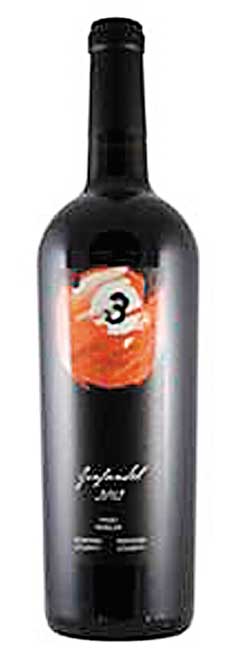New World Red Blends Versus Bordeaux
Red wine blends are a hot commodity in the wine world today. It is the fastest growing segment in the past year, and it continues to grow with more and more brands every month, or even day, it seems.
These non-committal blends of grapes are made to a recipe and are projected toward a specific flavor profile. No mention of grape on the label, just a fanciful and proprietary name will suffice.
Well, as much as anyone can enjoy those wines, let me re-introduce you to a red wine blend that has been around for centuries and will be on the rebound in the market.
It’s called Bordeaux.
Let’s compare them for a second. Both are blends. Bordeaux is a blend of red grapes according to what grows best in the vineyards of the estate.

This Zinfandel really over-delivers for the money PHOTO FROM ROBERTO VIERNES
Some estates have soil that is better suited to grow Cabernet Sauvignon.
Perhaps a neighbor has more land suitable for Merlot. Thus the blend becomes unique and the style of the wine consistent and definable.
On the other hand, the New World red blends (NWRB) are blended not because of the source of the grapes, but are designed for the consumer. It is more about flavor profile and hitting a price point for the market. Bordeaux wines are named after the appellation they come from.
Yes, the name of the Chateau is quite prominent because that states the ownership. Wine such as Chateau Lafite-Rothschild, which is from Pauillac, displays that appellation prominently on the label. New World red blends have often fun and marketable names, like Juxtapoze, Coup de Grace, Carne Humana, Menage a Trois, etc.
If you look at where it is from, it is probably likely to name the state, which is still dominated by California.
Ageability and longevity are things that remain to be seen with these NWRB. Bordeaux can age for decades and, in rare instances, more than a century.
Bordeaux gives many the impression of being very expensive and rightfully so, when the most famous Bordeaux are tremendously expensive and collectable.
NWRB certainly fill a niche in the market and are seen as being a better value. However, there are many value-driven Bordeaux now that are at the same price of the NWRB.
And with the quality of the 2014 vintage in Bordeaux, and the downturn in the value of the Euro versus the dollar, Bordeaux wines are as attractive as ever and primed for making a comeback on the American market. There are even some very well-priced 2011s and 2012s that are coming into the market, like Chateau Bellegrave, Chateau Moulin and Chateau Haut Beausejour.
These are not the jammy, almost sweet-like-candy drink that a lot of the NWRB can be. They are more pedigreed and complex. They have ripe but not overripe berry nuances along with hints of earth — things altogether more complex and interesting to my palate.
So if you are in the mood to try a different kind of red blend, you may just want to check out some Bordeaux at your next opportunity.
Recommendations: 2012 3 Ball Zinfandel ($14) I’m not a huge Zinfandel lover, in all honesty, but this wine is way too good not to drink. It has impressive juicy fruit and a luxurious texture. This really over-delivers for the money. I would pair it with some barbecue ribs slathered in your favorite sauce.
2010 Chateau Belles- Graves ($29) is perfectly plummy with floral notes and a good touch of vanilla. It is sleek and has an elegant edge. This is great with burgers or a perfectly grilled steak, and even grilled duck breast. You can find both at Fujioka’s Wine Times





